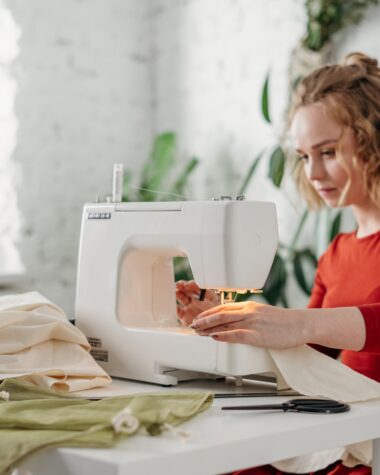Welcome to our exciting guide on how to create your very own DIY Epoxy Resin Coffee Table! If you’re looking to add a touch of elegance and uniqueness to your living space, epoxy resin is the way to go. This versatile material not only enhances the beauty of wood but also provides durability and protection. In this blog post, we will share with you all the tips, tricks, and steps required to craft your stunning coffee table that will surely become the centerpiece of any room. So grab your tools and let’s dive into the wonderful world of epoxy resin furniture making!
What is Epoxy Resin?
Epoxy resin, often referred to simply as epoxy, is a versatile and popular material used in various industries, including furniture making. It is a type of synthetic polymer that consists of two main components: resin and hardener. When these two substances are mixed together in the correct ratio, a chemical reaction occurs, resulting in a durable and glossy finish.
Benefits of using Epoxy Resin for furniture
Epoxy resin is a versatile material that has gained popularity in the world of furniture making, and for good reason.
Durability: One of the main benefits of using epoxy resin for furniture is its durability. Once cured, epoxy resin forms a hard and strong surface that can withstand everyday use without easily scratching or denting.
Designs: Another advantage is its ability to create unique and eye-catching designs. Epoxy resin can be mixed with pigments, dyes, or even metallic powders to create stunning patterns and effects on furniture surfaces.
Protection: In addition to aesthetics, epoxy resin also provides protection for your furniture. It acts as a barrier against moisture, stains, and UV rays, ensuring that your coffee table remains in pristine condition for years to come.
Tools and materials needed for making an Epoxy Resin Coffee Table
When it comes to creating a stunning DIY epoxy resin coffee table, having the right tools and materials is essential. Here’s a breakdown of what you’ll need for this project:
A sturdy table base: Choose a base that suits your style and complements the overall design you have in mind. It can be made of wood, metal, or any other material that can support the weight of the tabletop.
Epoxy resin: This is the star of the show! Look for a high-quality epoxy resin specifically designed for furniture projects. Make sure to check its curing time and instructions before purchasing.
Pigments and dyes: To add some color to your tabletop, consider using pigments or dyes specially formulated for use with epoxy resin. Experiment with different shades to achieve your desired look.
Mixing containers and stir sticks: Use plastic or silicone mixing containers that are large enough to accommodate both parts of the epoxy resin mixture without overflowing.
Safety gear: Protect yourself by wearing gloves, safety goggles, and a mask when working with epoxy resin as it can be toxic if mishandled.
Sandpaper and polishing compounds: These will come in handy during the finishing process to smooth out any imperfections on your tabletop surface.
Liquid release agent : Apply this agent on surfaces where no adhesion is required
Remember, these are just some of the basic tools and materials needed for making an epoxy resin coffee table. Depending on your design preferences, you may also require additional items such as decorative elements like dried flowers or glitter.
Step-By-Step Guide To Creating The Table
Prepare your materials: Gather all the necessary tools and materials for your DIY epoxy resin coffee table project. You will need a wooden tabletop, epoxy resin, mixing containers, stirring sticks, gloves, a heat gun or torch, sandpaper, and any desired additives like pigments or glitter.
Sand the tabletop: Start by sanding down the wooden tabletop to create a smooth surface for the resin. This step is crucial as it helps the resin adhere better and prevents any imperfections from showing through.
Mix the epoxy resin: Follow the instructions on your chosen brand of epoxy resin to mix it properly with its hardener. Make sure to measure accurately and stir thoroughly until you achieve a homogeneous mixture.
Pour and spread the resin: Carefully pour the mixed epoxy resin onto your sanded tabletop in an even layer. Use a spreader tool or spatula to evenly distribute it across the entire surface, making sure not to miss any spots.
Add customization touches: If desired, now is the time to add any customizations like pigments or glitter into your epoxy resin mixture before pouring it onto your table.
Remove air bubbles: To avoid unsightly air bubbles in your finished table, use a heat gun or torch at low heat settings to carefully pass over the surface of poured resin after spreading it out evenly.
Let it cure: Allow ample curing time according to manufacturer’s instructions before touching or moving your newly poured coffee table top with cured epoxy resin.
Remember that each project may have slight variations depending on personal preferences and design choices! Stay creative throughout this process!
Maintenance and care for your Epoxy Resin Coffee Table
Taking proper care of your epoxy resin coffee table is essential to ensure its longevity and keep it looking beautiful. Here are some tips on how to maintain and care for your table:
Regular cleaning: To remove any dust or debris, simply wipe the surface of the table with a soft, damp cloth. Avoid using abrasive cleaners or scrubbing too hard as this can damage the epoxy resin finish.
Avoid extreme temperatures: Epoxy resin is sensitive to extreme heat or cold, so avoid placing hot pans or cups directly on the surface without using coasters or trivets. Additionally, do not expose your table to direct sunlight for extended periods as this can cause discoloration.
Prevent scratches: While epoxy resin is durable, it can still be susceptible to scratches from sharp objects like keys or knives. Always use coasters under glasses and avoid dragging heavy items across the surface.
Reapply protective coatings: Over time, the protective coating on your epoxy resin coffee table may wear down. To maintain its shine and protect against stains, consider reapplying a clear coat every 6-12 months.
By following these simple maintenance tips, you can ensure that your DIY epoxy resin coffee table remains in excellent condition for years to come!
Also Read: Do Pet Odor Candles Work? How To Make Them.
Conclusion
By following this step-by-step guide, you can now confidently embark on the journey of creating your very own DIY epoxy resin coffee table. With its glossy finish and unique designs, an epoxy resin table is sure to become a focal point in any living space.
Using epoxy resin for furniture offers numerous benefits, including durability, versatility, and the ability to create stunning artistic effects. By investing in the right tools and materials and carefully following the instructions provided, you can easily achieve professional-looking results.








